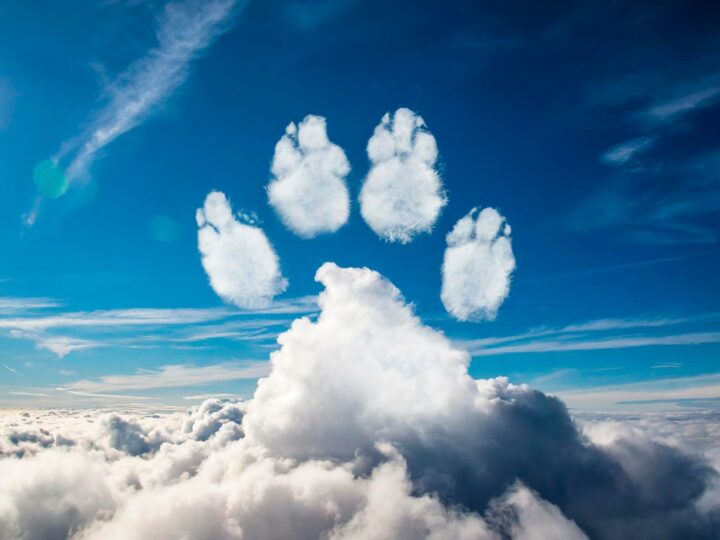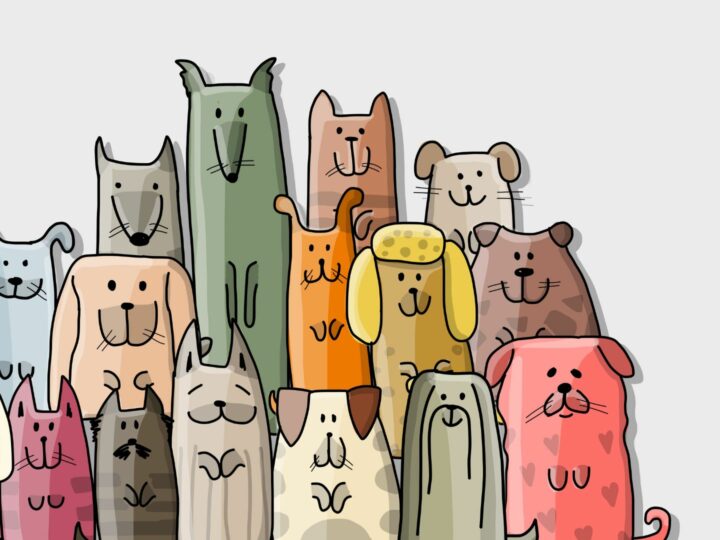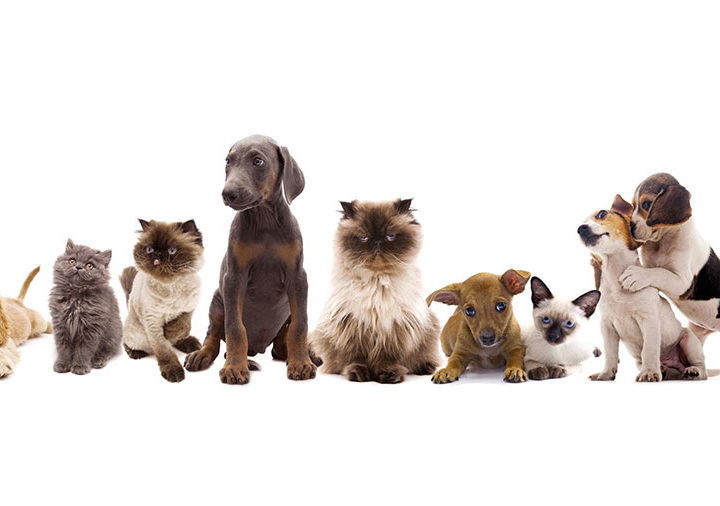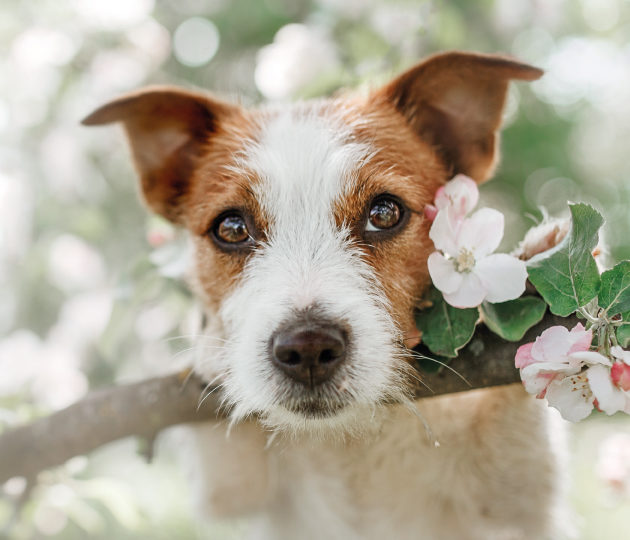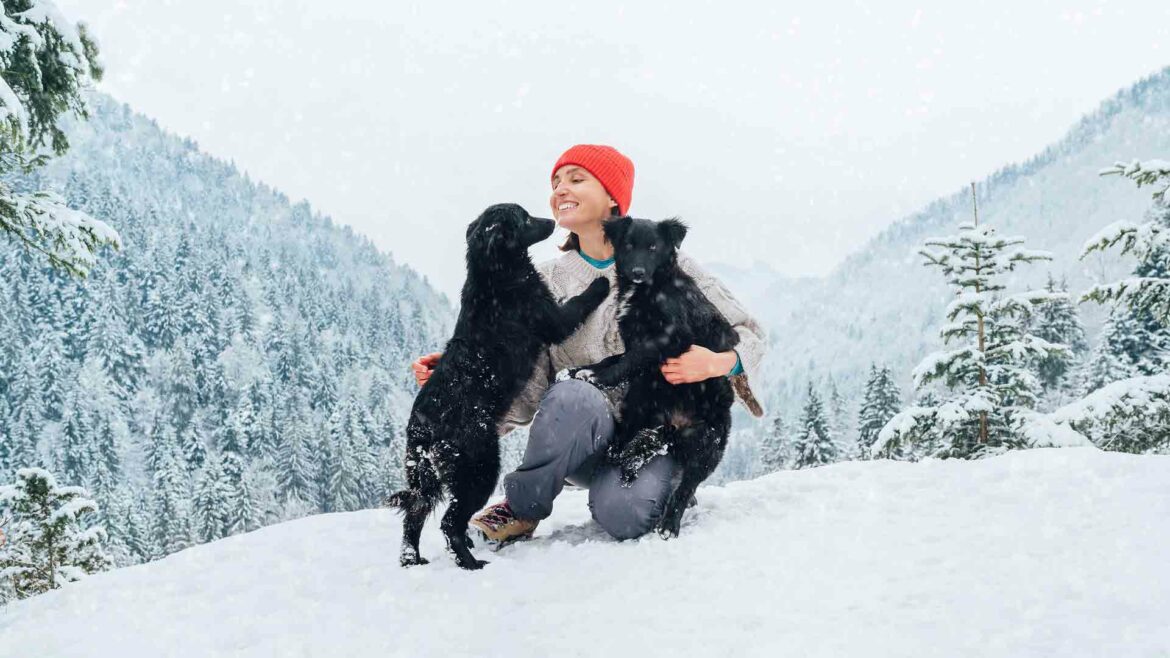
World Snow Day was celebrated on January 21st! What better moment to talk about the relationship between our beloved dogs with snow?
In this article we will discover together which breeds absolutely love the white and soft blanket of snowy landscapes. But are there breeds that are more cold resistant? Do all our four-legged friends really enjoy rolling around in the snow?
Let’s find it out together! We’ll also discover other curiosities, tips and even ideas for a snowy day with our four-legged hearts!
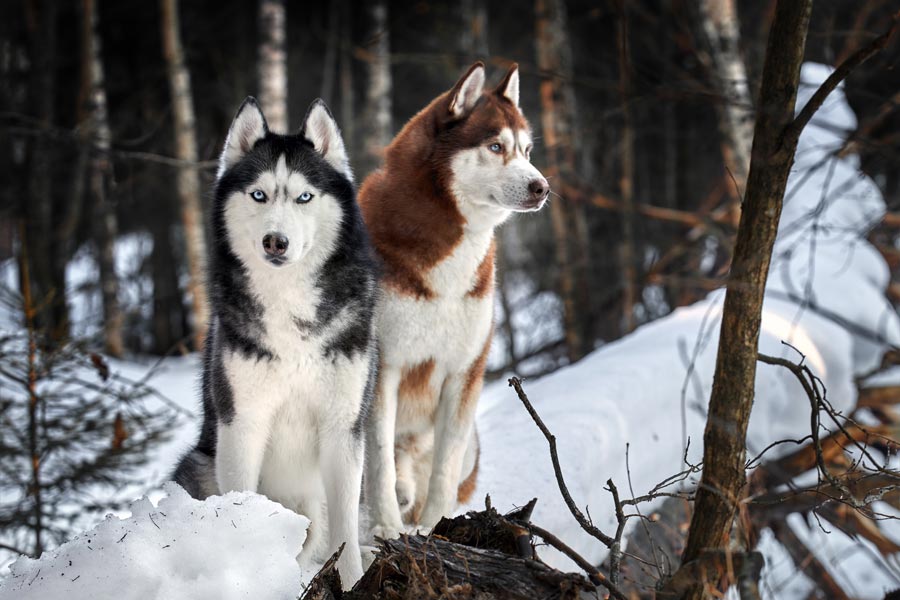
Dogs in snow: the Husky is certainly one of the first breeds we think of.
Dog breeds who love snow
Some breeds, due to their predisposition and their origin, are certainly more suitable to stay even for longer time lapse in harsh winter temperatures. Let’s take as example the Huskies and the numerous online videos in which their keepers invite them to come into the house during a heavy snowfall but the furry friends prefer instead to stay outside and to enjoy the white snowflakes falling from the sky!
The breeds that love the snow the most are those that, by their nature, have a coat resisting the cold. These dogs usually have a dense undercoat that keeps them warm even in the coldest moments, to be added to the thinner and longer external hair, protecting them from wet and snow.
Which are the dog breeds that love rolling around in this white and soft blanket? Let’s find it out now!
The Siberian Husky and the Alaskan Malamute
As already indicated, it is obviously necessary to mention the Siberian Huskies and the Alaskan Malamutes.
Accustomed to the harsh climates of Siberia, these dogs have a thick coat that insulates them from cold. This characteristic, combined with their size and strength, makes them a breed strongly predisposed to face the most difficult climatic conditions such as snow.
They are excellent adventure mates, known for their unlimited energy, but also definitely a symbol of elegance and beauty in the canine world.
Siberian Huskies and Alaskan Malamutes are two of the most used breeds in sledding, generally on icy or snowy surfaces. Just like Balto, who is an example of a very brave sled dog that we will never forget!
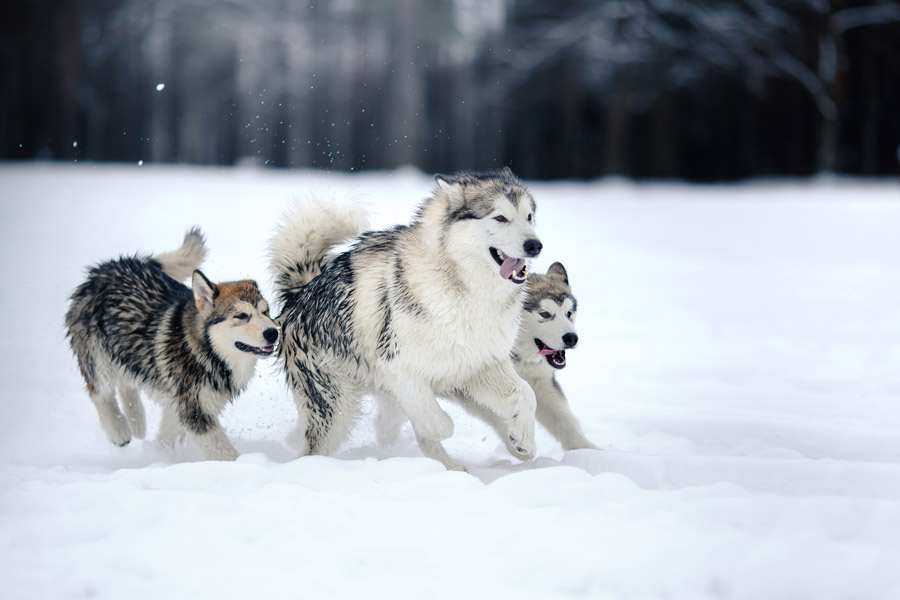
Imposing size, royal appearance and incomparable energy: we’re referring to the Alaskan Malamute.
Maremmano-Abruzzese Sheepdog
Many sheepdogs love adventure in the mountains and sometimes in snow.
For example, the Maremmano-Abruzzese Sheepdog is a breed that have incredible fun in snow. Even without taking into account the thick fur that distinguish them, thanks to their sturdy appearance combined with their determined temperament they can withstand the coldest climates.
In fact, these dogs love sleeping outdoors even during bad weather, rain or snow makes no difference for them and they curl up on the ground while their large tail protects their nose and paws. They are therefore certainly suitable to join their humans on snowy adventures. Whether it’s a walk through the snow-covered countryside or a winter hike, they will always be extraordinarily enthusiastic.
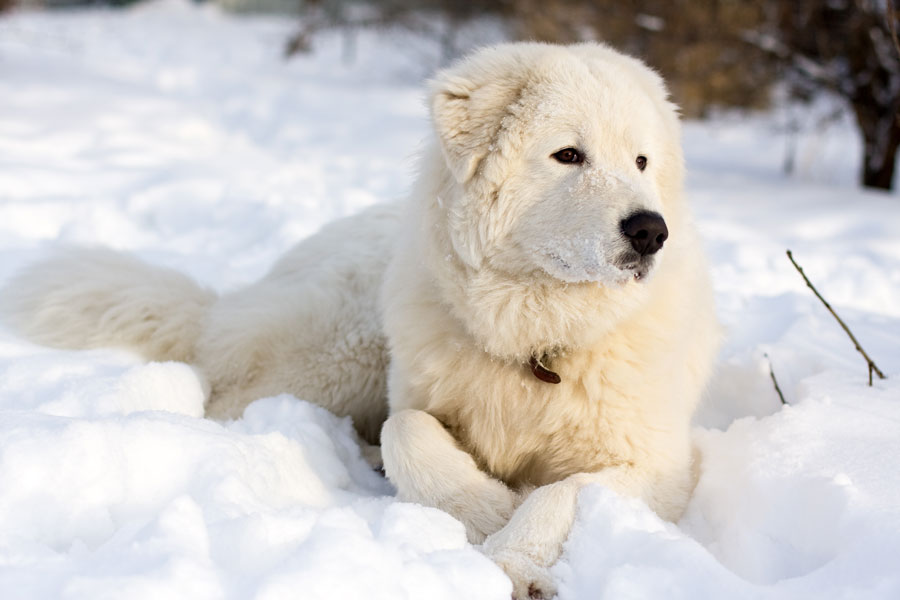
Characterized by an ideal coat that protects him from cold, the Maremmano-Abruzzese Sheepdog is friend of the lowest temperatures.
The White Swiss Shepherd Dog
Among the Sheepdogs we also find the White Swiss Shepherd, as white as snow… so it is impossible for him not to love it! In fact, mountains and snow are his favorite habitat! This little white wolf loves open places where he can run like crazy, release all his energy, camouflage himself in snowdrifts and then suddenly come out and run towards his beloved keeper. But he will equally appreciate walking side by side with us, following us like a shadow and getting lost while smelling the thousand different smells of nature.
The White Swiss Shepherd comes from a passionate selection effort. Originally, in fact, he was known as one of the many color variations of the wonderful German Shepherd, but he was excluded from the society that protects this breed since he was considered too visible during night patrols. The Swiss Alps were the first to obtain the requirements to make the breed recognized by the FCI, separating it from that of the German Shepherd.
His fur is double, dense and close-lying with an abundant undercoat, which is why he’s able to withstand even the coldest temperatures. Another important feature of his coat? It is glassy, in other words self–cleaning, so it quickly dries in record time and the accumulated dirt will dry and fall to the ground on its own.
Those who have a Swiss Shepherd as a life partner knows well the sudden emotional change that occurs as soon as the great snowy expanse appears in front of him… pure joy.
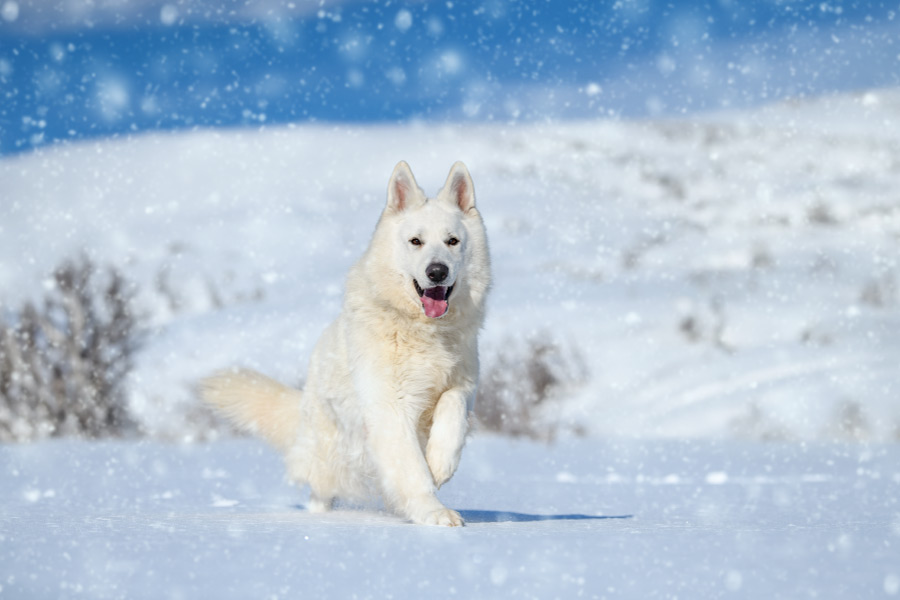
The White Swiss Shepherd is a very obliging breed, with a lively but very balanced and sociable behavior.
The Bernese Mountain Dog
The Bernese Mountain Dog, also known as the Berner Sennenhund which derives from the Swiss region where his dynasty began, may not have a coat as thick and soft as the Husky or Malamute, but he is definitely a fitting breed for cold climates.
These gentle giants were bred to work in Swiss farms in the snow-covered Alps. Thank to their sturdy body, their long fur (that provides an excellent protection from cold) and their sweet temperament, they know how to be true friends of winter and snow.
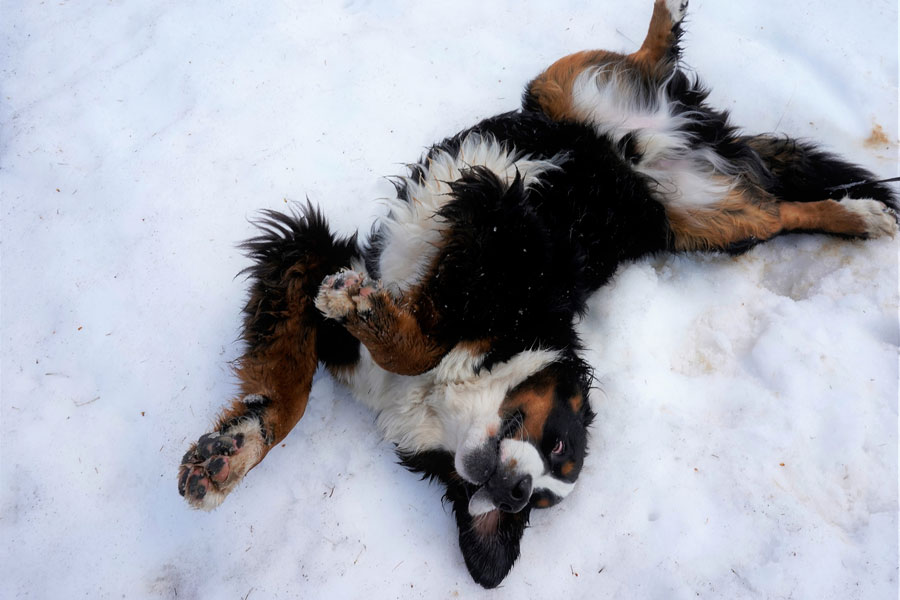
Grown in the middle of the cold Alps, the Bernese Mountain Dog knows how to resist the winter. But above all he knows how to have fun in snow!
The Samoyed
Also called “smiling dogs” for their amused and joyful expressions, Samoyeds are a friendly hairy ball and have a great affinity with different weather conditions. In fact, he is one of the best-known breeds among snow-loving dogs.
Dating back several thousand years, bred in northern Russia and Siberia, these dogs were used to facilitate reindeer grazing and sleigh pulling. Originally they were used in daily work to contribute to hunt and pull of sleighs while traveling but, over time, also to keep reindeer herds together. Samoyeds had also the important task of keeping their keepers warm during the night to protect them from polar cold. In fact, their thick white coat, allows them to camouflage themselves with the snow and provides unique warmth and thermal insulation.
Samoyed are also known for their playful and sociable nature, which makes them great companions for winter fun. Just like Belle and Sebastien and their unforgettable mountain adventures!
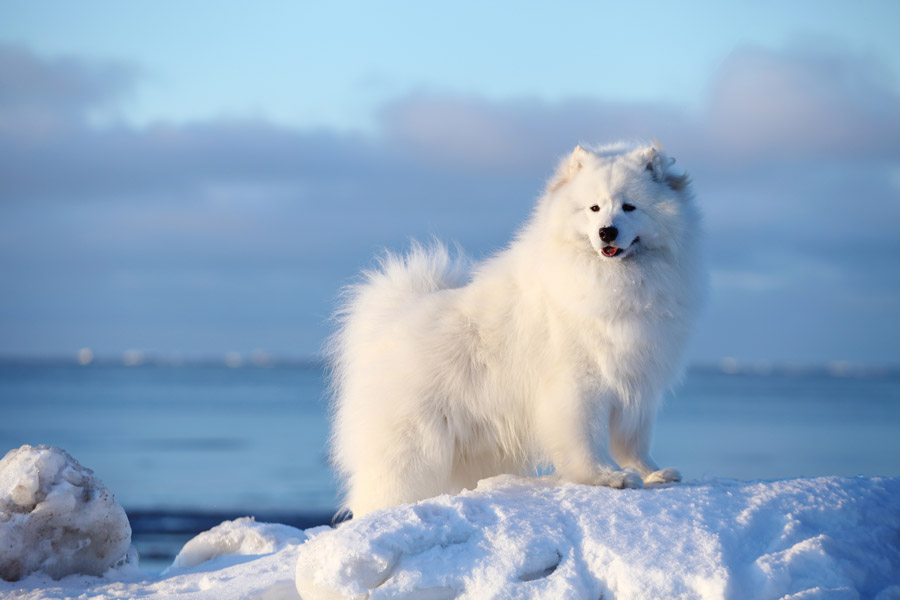
The expanse of snow is his territory: we’re talking about the Samoyed.
The St. Bernard
The Saint Bernard embodies nobility, devotion and a sense of sacrifice.
He was originally bred to be a guard and defense dog, with the aim of making the mountains a safe place for everyone. Later, however, this breed demonstrated more and more skills. Among these, certainly the propensity for rescue, revealed with the rescue of some pilgrims who got lost along the route and finding people buried by snow avalanches.
With his inseparable barrel around his neck (rumor has it that the bottle contains a special liquor to reactivate blood circulation), the Saint Bernard remains today the snow dog par excellence, an icon of Alpine rescues with a kind and tolerant soul. And let’s mention the unforgettable Heidi’s faithful adventure companion: the good old Joseph!
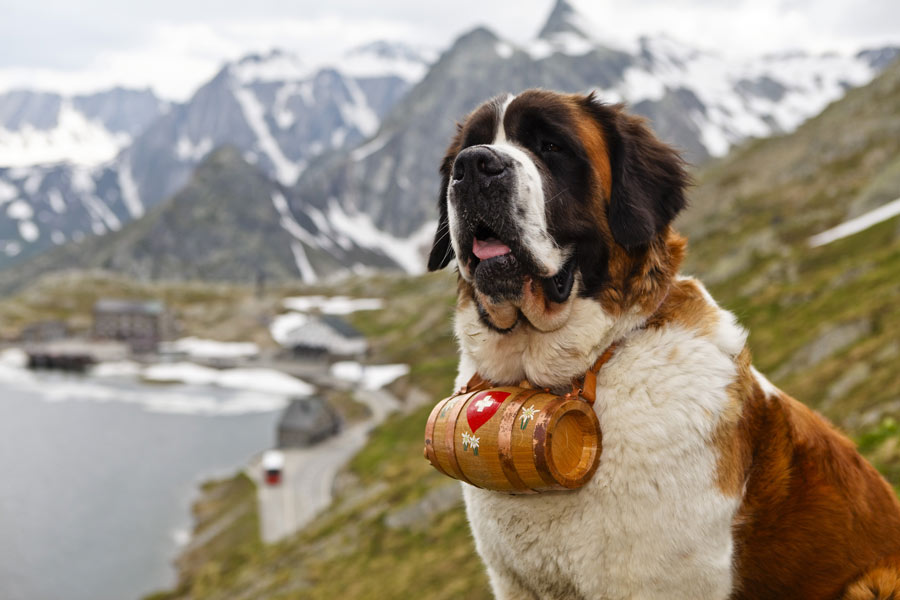
The perfect mountain picture: The Saint Bernard with his typical little barrel around his neck!
The Akita Inu
You will surely remember Hachiko, Richard Gere’s faithful companion in the film that touched the hearts of the audience. The Akita Inu originally from Japan, is not only a dog with a stubborn and faithful character par excellence, he is also a true lover of snowy expanses. His muscular appearance and thick fur make him able to face the coldest climates.
At first they were dogs belonging to hunters who lived in the mountains, later we saw them accompanying the Samurai during battles and then they became life companions of Japanese aristocrats. The Akita Inu loves the snow and would spend the entire day there. Furthermore, he is an excellent partner for long walks in the mountains, which he will surely appreciate very much, enjoying every nap and every leap as much as possible… and if you happen to lose him, you will definitely find him with his nose in the fresh snow to find out what’s underneath!
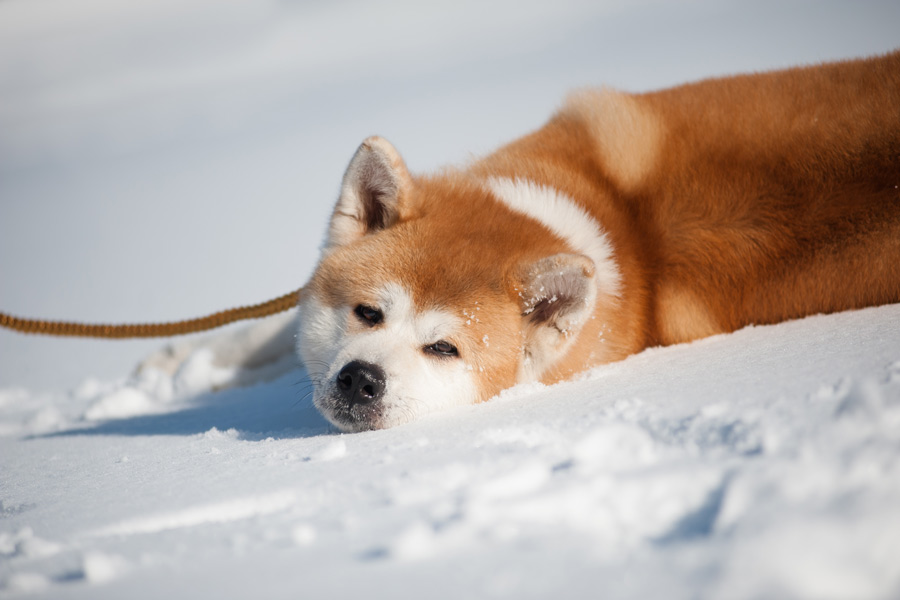
“Let me lie here in the snow for a while, it’s my favorite place!”
The Tibetan Mastiff
A dog breed belonging to the Molossus, a real mountain dog. As his name suggests, he originally comes from Tibet and has been used for centuries as a guard dog. In fact, his large size allows him to face predators such as leopards and tigers.
The first specimens date back 58,000 years ago, and his bloodline connects him, for example, to the Saint Bernard, the Bernese Mountain Dog but also to the Leonberger.
His fur is silky and very abundant, especially during the winter season in which he resists the freezing temperatures of winter very well. His company can be enjoyed through calm, relaxing walks and furry hugs that bring immediate warmth.
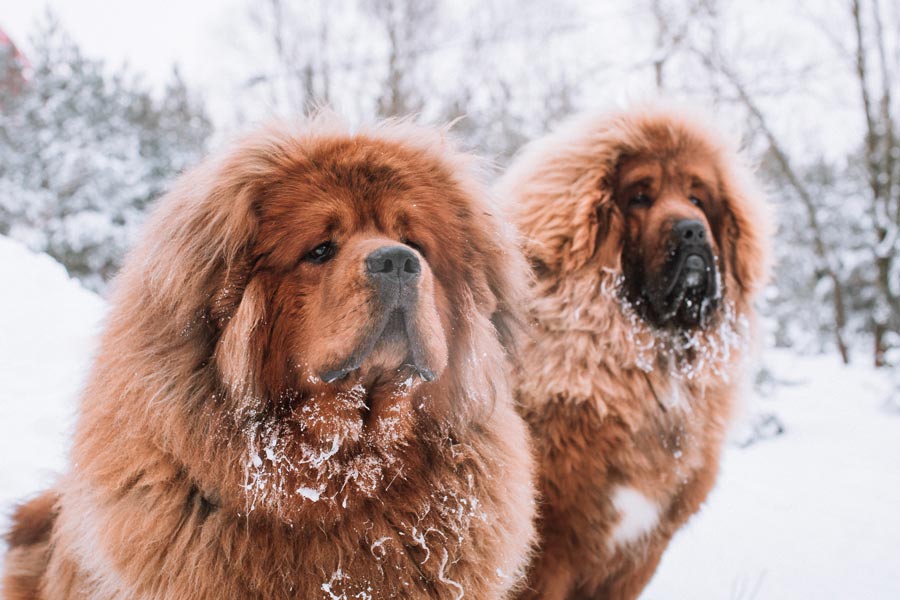
The Tibetan Mastiff is one of the most imposing and suitable dog breeds for the cold environment.
The Pomeranian
Although he’s a small dog that rarely exceeds 3.5 kg, the Pomeranian is truly playful and loves snow. In fact, thanks to the presence of a thick undercoat he knows how to protect himself from the cold. It is good to know, however, that his undercoat may not always be as thick as it should be according to his in nature. In particular, this happens when the dog is used to living in a home environment and he isn’t regularly exposed to lower temperatures.
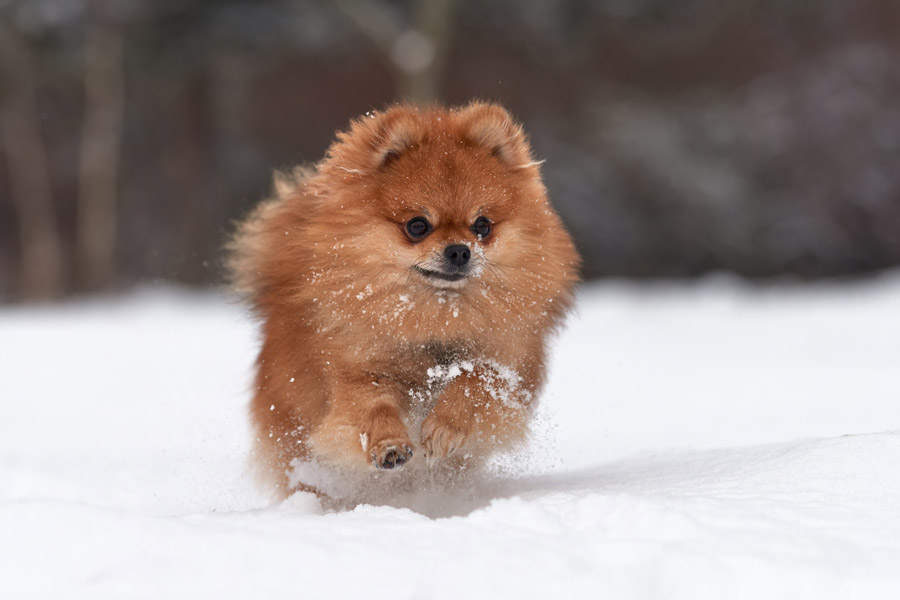
A small-sized dog, but brave and with a great temperament. The Pomeranian has a perfect coat to withstand the snow!
Why do all dogs love snow?
Yes, it is true, some dog breeds are genetically more predisposed to snow, but all dogs love playing and rolling around in the large, soft snowy expanses.
It’s funny that almost every type of dog, at their first snowfall, will be extremely happy to run wildly and jump, plunging into the fresh snow. The reason why is that snow is a completely new sensory experience for our four-legged hearts.
Let’s think about it carefully: when we walk in the middle of a snowy landscape, don’t we also have a different perception of spaces?
Well, this happens to our dogs as well. Given that their senses are much more developed than ours, we can easily understand that for them moving through the snow will be an irresistible experience to be lived and enjoyed with a lot of energy!
Plunging into snowdrifts will make him feel a soft sensation he has never felt before. They say that the sensation that dogs have in the middle of fresh snow is equivalent to what humans feel when they’re carried by the sea waves.
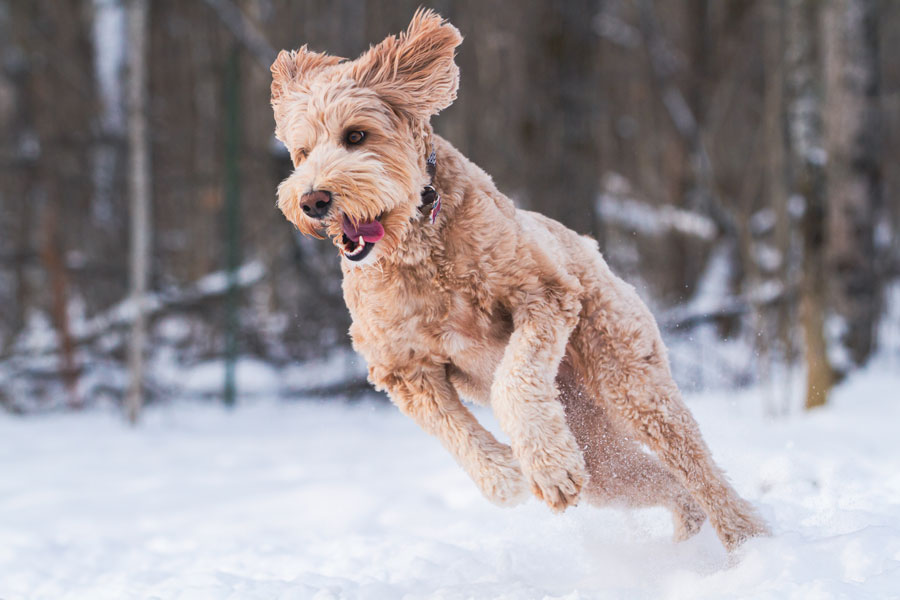
Running and diving in the snow is an experience that every dog should live.
The reasons why dogs like snow: they love playing, new experiences and the different sensations they rarely encounter during other seasons.
So let’s let them run around freely, but at the same time let’s not forget to dry them carefully once they return home.
It is also important, for long-haired breeds, once dried, to proceed with brushing with the help of the Glossing and Detangling Spray in order to remove all the knots created by the ice and by running wild in the snow. If knots are not properly untangled, they can really be a good problem. Let’s also remember to use a good amount of Paw Balm to re-hydrate nose and paws!
All we need to do is getting ready to go out, take our beloved four-legged companion to a snow-covered meadow and let him have fun discovering new emotional experiences!




